
Guests
- Mario Murillovice dean of the School of Communications at Hofstra University and award-winning journalist.
The massacre of five indigenous leaders in Colombia has shocked the country. The killings took place in the southwestern region of Cauca. Among the victims was Cristina Bautista, the leader of the semi-autonomous indigenous reservation of Nasa Tacueyó. Four of the community’s unarmed guards were also killed, while six others were wounded. A group of U.N. experts have denounced the massacre and demanded the Colombian government take urgent measures in cooperation with indigenous authorities to investigate the murders. Police have made no arrests, and no suspects have been named in the massacre. Since the signing of the peace accords in 2016, at least 700 social leaders, mostly Afro-Colombian and indigenous activists, have been murdered in Colombia, according to the Institute for Development and Peace Studies. We speak with Mario Murillo, vice dean of the School of Communications at Hofstra University and award-winning journalist who has extensively reported on Colombia and the region of Cauca.
Transcript
AMY GOODMAN: We end today’s show in Colombia, where the massacre of five indigenous leaders in the southwestern region of Cauca Tuesday has sent shockwaves through Colombia. The massacre unfolded when a group of men in a black vehicle reportedly opened fire on a convoy of indigenous guards in Tacueyó, according to the Association of Indigenous Councils of Northern Cauca. The men also fired at an ambulance tending to those who were injured in the attack. Among the victims was Cristina Bautista, the chief of the semi-autonomous indigenous reservation of Nasa Tacueyó. Four of the community’s unarmed guards were also killed, while six others were wounded. On Monday night, just hours before being murdered, Cristina Bautista sent an alarming audio recording to some of her WhatsApp contacts.
CRISTINA BAUTISTA: [translated] We are in the checkpoint at the headquarters, and a black van just drove by. Then the men started shooting. Thank God no one was wounded, but we are on high alert because there is activity here at the shelter.
AMY GOODMAN: Colombian President Iván Duque vowed Wednesday to deploy 2,500 troops to the region. He blamed dissidents of the FARC guerrilla rebel group who oppose the country’s peace accords, but police have made no arrests, and no suspects have been named in the massacre. Since the signing of the peace accords in 2016, at least 700 social leaders have been murdered in Colombia, according to the Institute for Development and Peace Studies, with Afro-Colombian and indigenous activists at the forefront of the targeting.
Well, for more, we’re joined by Mario Murillo, vice dean of the School of Communications at Hofstra University, award-winning journalist who has extensively reported on Colombia and the region of Cauca.
Mario, welcome back to Democracy Now! I went to see you lead a discussion yesterday at New York University. The mourning of people not only in Colombia, but — I mean, Cristina Bautista was just recently here in the United States, a leader in the indigenous community and resistance. Can you talk about what you understand took place?
MARIO MURILLO: It’s good to know, and I appreciate you doing this. This is shocking. Talking to the community, in fact, all day yesterday, being in touch with folks on the ground in Tacueyó and other parts of Cauca, there’s shock. There’s fear. There’s a sense of immobilization. And that’s very — that’s exactly the strategy, is to do precisely that against the indigenous movement.
It’s shocking, but it’s not new. And as you pointed out, over 700 people killed, indigenous and other social movement leaders killed. In Cauca, the numbers are about 200, over 200 indigenous leaders targeted, threatened. The ombudsman office, the Colombian government itself says, from 2016 to 2019, over 1,300 cases of threats, of cases of torture, and I think 40 in the past year, indigenous leaders themselves in Cauca killed directly.
And we’ve been seeing it one by one, but now, suddenly, we see this massacre the other day, and now people are paying attention to it. But it’s been going on consistently pretty much over the last three years. And really for the last 10 years it’s been going on, as the coca cultivation continues to escalate in that area, and Cauca being such a strategic location for the coca groups, the traffickers, who are trying to ship it out and get it out of the country.
AMY GOODMAN: And as you understand and try to reconstruct, as you communicate with people from that region, what took place?
MARIO MURILLO: Well, what’s happening there is really a battle of territory. And it’s really, once again, the indigenous communities who, for years, for decades, have been struggling to control their sacred territory and do it through peaceful means, through the autonomy, the indigenous autonomy and authority that they have. Cristina Bautista is representative of that authority, confronting armed groups, confronting all armed groups, from the armed forces themselves, the state security forces, but paramilitary groups, guerrilla groups and narcotrafficking militias, small groups that are working in different ways.
We were talking last night with the former president of the CRIC, the Indigenous Regional Council of Cauca, who’s here in New York, Jesús Avirama. And he pointed out that the big difference now than what was going on 30, 20 years ago is that in the past there was a clear definition as to who was who. The community knew that these were — there might have been FARC combatants there, or ELN combatants, paramilitary groups that are operating and working with narcotraffickers, and then obviously the government forces themselves. Now what you have is you have a whole dispersed group of fighters and armed combatants.
The government immediately embraced this narrative that this was FARC dissidents. And there’s a good chance that they were indeed, but there’s like six or seven different groups that identify as FARC dissident groups that basically did not take part in the negotiation that led to the signing of the peace accord in 2016. But these groups have long ties with state security forces. The fact that they were there without any interference — and we’re talking about very small thoroughfares where there’s only one way in or out — and that they weren’t stopped indicates —
AMY GOODMAN: And these are military checkpoints they have to go through.
MARIO MURILLO: Yeah.
AMY GOODMAN: There are a number of bases in Cauca.
MARIO MURILLO: Right. And this is precisely the argument that the indigenous leaders are making. And when the armed forces announced that they were going to send troops there and they were going to militarize that, with cooperation of the indigenous leadership, the indigenous movement immediately pointed out, “No, no, no, no. Wait a minute. We’re not — we’re not asking for any military intervention, because they’re, in many ways, the ones who are killing us.”
And there are plenty of reports. Even two days before this particular massacre, there was a report of an indigenous leader in Corinto that was – of an indigenous organizer, activist, who was killed and tortured by military forces. And then the military itself made the argument that this was a combatant who died in combat. And all the evidence shows that this was just another common person there.
AMY GOODMAN: I want to go to an indigenous activist who was in close touch with Cristina. Democracy Now! reached her Thursday night, last night — Vilma Almendra. She’s also a a Nasa-Misak woman, indigenous leader, friend and colleague of Cristina Bautista. Vilma was in Quito, Ecuador, when we reached her. And she describes the last time she heard from Cristina earlier this week.
VILMA ALMENDRA: [translated] I met Cristina almost two years ago. I identified with her a lot, because she was a humble woman. She was a very committed woman. But she also addressed the contradictions. We talked about the different contradictions that we’re seeing in our movement and the need to open spaces for dialogue and get on the right path again, as she would say. We had a fluid communication via WhatsApp.
Just this Monday, she added me to a WhatsApp group with approximately 70 people from the north of Cauca, but mainly from the town of Toribío. In that WhatsApp group, we circulate the information of what happens in the Cauca territory. And that Monday, at 10:30 at night, Cristina sent a message saying, “Alert. We are at the light post, and a van with men shooting drove by.” I saw that nobody in the WhatsApp group reacted. Nobody asked. Then I sent a message to Cristina and asked what was happening, and that if she could record an audio, to circulate it and at least make an alert. She sent me that audio. I received it at about 10:30 at night. And at 11:00, I circulated it. And she said that she was very worried, that she felt very alone, and that it wasn’t her turn to patrol that region that day, but that she, as the authority and caretaker of the territory, it was her responsibility to be there.
We then talked at like 12:00 at night. The next day — as I am here in Ecuador; I am not in Colombia — we had commitments, and we left. And I did not talk to her that morning. And in the afternoon, I heard the terrible news of the massacre. And right now we just heard a report that another massacre has occurred in Corinto.
AMY GOODMAN: And Vilma Almendra then went on to share her message with an American audience, which for decades has funded the so-called war on drugs in Colombia and currently backs the government of the right-wing President Iván Duque.
VILMA ALMENDRA: [translated] As a woman, Nasa-Misak, I would ask the people, the processes and the movements to understand that what is happening in Colombia, the war they are inflicting upon us, is precisely to guarantee the reproduction of the patriarchal, colonial and capitalist system to accumulate wealth there in the United States. Who is profiting with this blood, with death, with displacement, with the destruction of our autonomy here?
Understand that we are being subjected to war to guarantee the preservation of a system that not only exists in Colombia but in different parts of the world and that the challenge we have as peoples and movements is to try to see beyond this state that inflicts war. We need to self-organize, defend ourselves autonomously and have autonomous resistance be on the institution, which is the one that is killing us.
AMY GOODMAN: That’s, again Vilma Almendra, a Nasa-Misak woman, indigenous leader from Cauca, remembering her friend. Special thanks to Democracy Now!'s María Taracena. Mario Murillo, you're a Colombian-American journalist, have worked so hard on the issue of Colombia for decades. There is the enormous repression, and there is the resistance. What is being resisted?
MARIO MURILLO: I think that’s really the threat that the indigenous movement represents to the powers that be and the armed groups, the authority that they pose and that they present in terms of protecting the territory, in terms of defending the land. You know, we’re talking a green movement there in Colombia, the original green movement. They’re using their constitutional authority to protect the land and confronting actors who are taking advantage, from extractive industries throughout the country, mining — illegal mining in Cauca and other parts of the country, to the armed groups that are involved in narcotrafficking. All of those are part of the extractive philosophy that the Colombian government, unfortunately, notwithstanding its discourse against drug trafficking, is embracing.
The government of Duque, when he talks about coming and sending in troops to Cauca, that’s precisely what they’re wanting to do — militarize the zone and negate the authority and the right for the indigenous communities to resist those forces. And I think that’s really complicated to understand. People ask, “Why don’t they want the military there?” The military are part of the problem. And unfortunately, the U.S. policy for decades has been driven by military and anti-narcotics so-called drug — anti-drug war policies that do not take into consideration the rights of the people in terms of their movement and their rights to resist that policy.
AMY GOODMAN: Well, Mario, of course, we’ll continue to follow this. Mario Murillo, award-winning journalist and author, extensively has covered Colombia, and specifically Cauca. Among his books, Colombia and the United States: War, Unrest, and Destabilization.
And as we wrap up today’s show, welcome to the world Zaya Luz Needham, and congratulations to parents Nat and Amanda.
And that does it for Democracy Now! Democracy Now! is currently accepting applications for paid six-month internships here in our New York studio. Learn more and apply at democracynow.org.

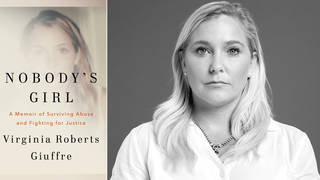
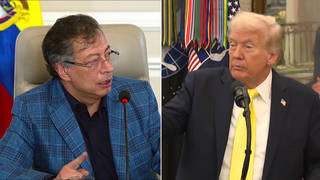
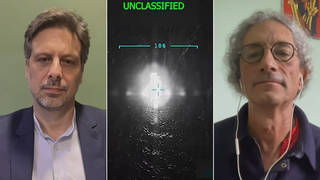
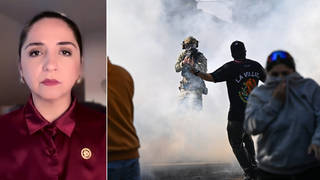





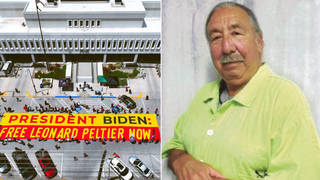
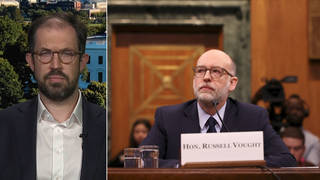
Media Options